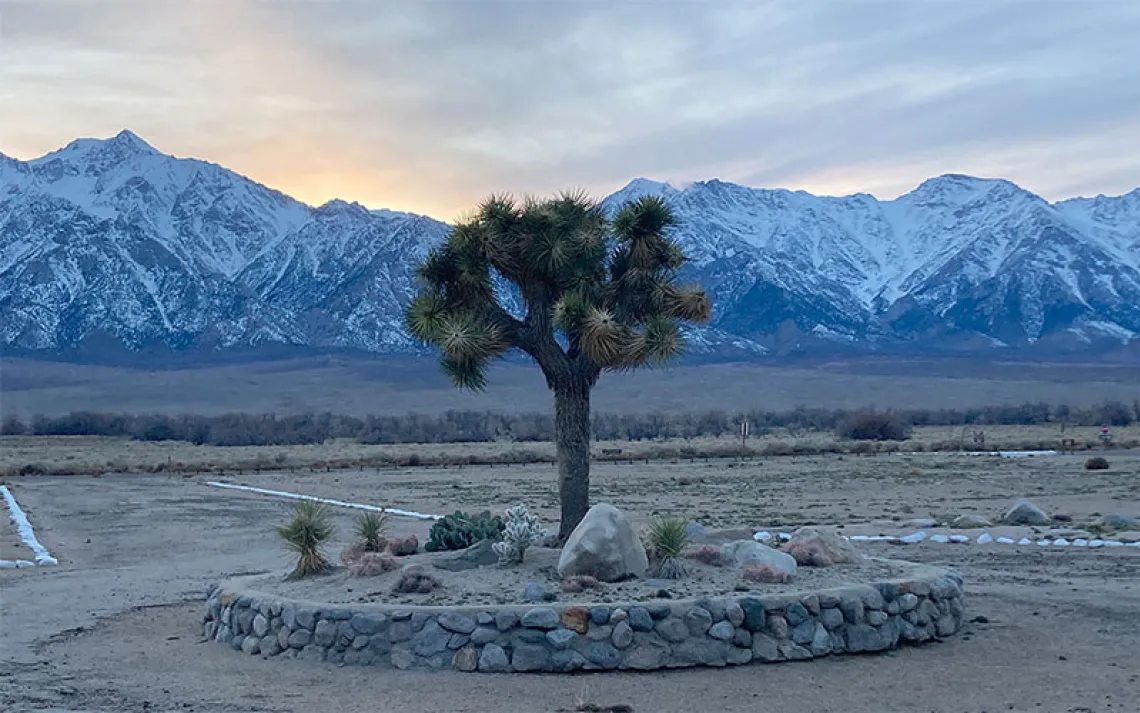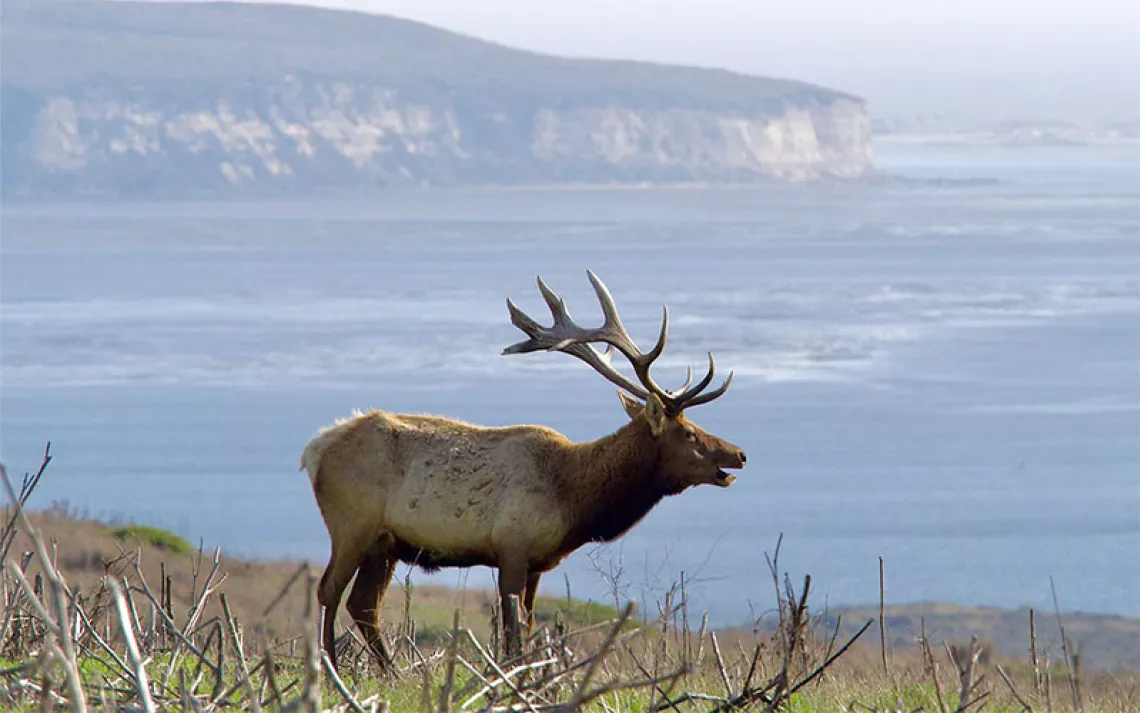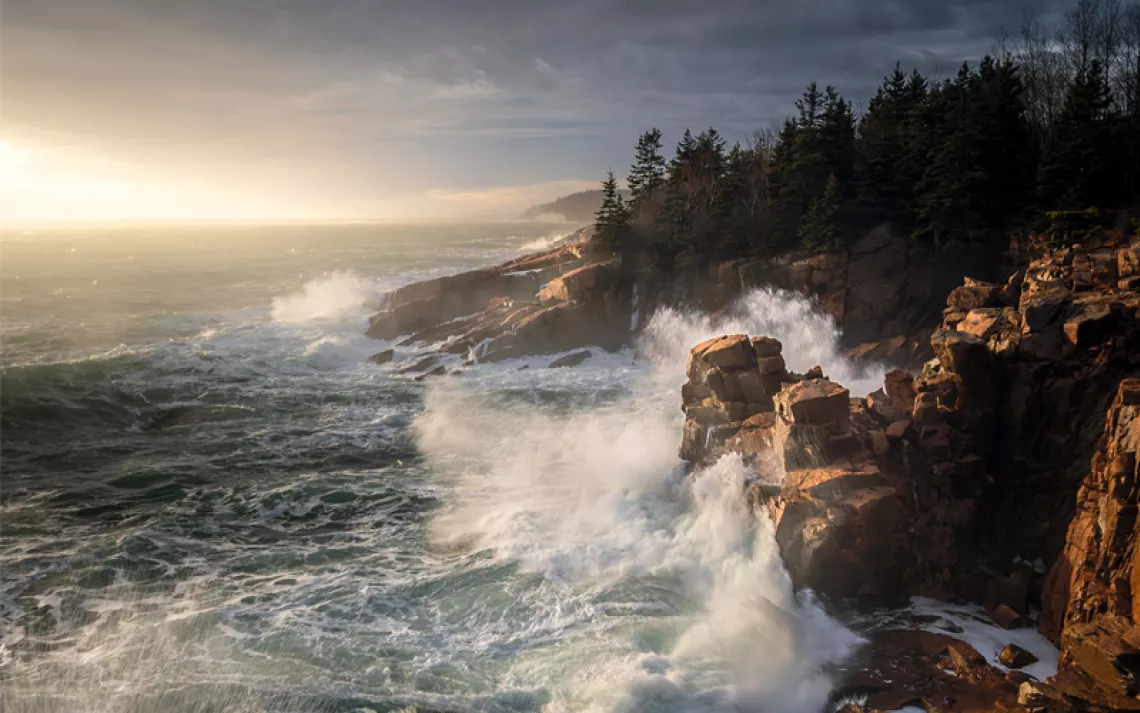The Chumash Resume Their Obligation
The co-managers of the nation’s newest national marine sanctuary off central California have ecosystem-management experience going back millennia

Paddlers from the Chumash Maritime Association paddle their tomol toward Lisamu’ during the Northern Chumash Tribal Council's Reunite the Rock ceremony. | Photo by Robert Schwemmer courtesy Northern Chumash Tribal Council
California’s original ocean stewards are the driving force behind what may be the nation's newest national marine sanctuary. Pending final approval, the Chumash Heritage National Marine Sanctuary would effectively stretch over half of California’s coastline, from Mendocino County north of San Francisco to the elbow at Point Conception, covering over 19,000 square miles. It would be the first national marine sanctuary in California to be co-managed by Indigenous people.
Charged with research, resource protection, education, and outreach, for more than four decades nominations for national marine sanctuaries have been put forward by federal agencies. In 2015, the National Oceanic and Atmospheric Administration invited communities to nominate waters for sanctuary status. One of the first proposals they received was from the Northern Chumash Tribal Council.
Though their proposal was accepted, it languished untouched during the Trump years. But with a new administration calling the shots, the CHNMS is now on track for designation by the end of 2023.
“Chumash people didn’t have a word for conservation; we didn’t need one,” explains Violet Sage Walker, chair of the Northern Chumash Tribal Council and nominator of the CHNMS. “We were one with our environment. We could eat fish out of a creek. But we never thought about them being poisoned with arsenic. We didn’t know how to deal with a nuclear waste facility on our shores.”
“Chumash people chose a national marine sanctuary because they think they are the best vehicle to provide adaptive, ecosystem-based management,” explains tribal council legal adviser PJ Webb. “It’s much more aligned with how Chumash consider their role as stewards and guardians.”
“There’s only one federal program that manages for protection of an entire ecosystem and this is it,” says the Sierra Club’s Santa Lucia Chapter director Andrew Christie. “What was once unprotected and open for dumping and ear-shattering seismic activities now has defenders.”
Navigating industrial pollution and federal bureaucracy is new to the Chumash, but they’ve been practicing ecosystem-based management for millennia. “Traditional Chumash people, we view ourselves as being part of the environment and ecology,” explains Bear Clan elder Michael Khus-Zarate. “Our relationship with the ocean was primarily one of respect and reverence. It’s not ours to give away or to share; it’s ours to caretake. We regard ourselves as caretakers of the land and water. We haven’t forgotten our obligations to do that.”
Those assumed obligations highlight differences between Chumash and European worldviews. “We have an obligation to caretake because we have so many more powers than our brothers and sisters in ocean,” continues Khus-Zarate. “We have the power to create or destroy. We have to be on side of creation.”

Pirate's Cove: Chair Violet Sage Walker and partners look across the ocean at the very waters that the Chumash sanctuary would protect. | Photo by Erin Eastwood courtesy Northern Chumash Tribal Council
Articulating Indigenous values helped the proposed CHNMS move forward. “We bring something to the table nobody else brings,” Sage Walker explains. “We can talk about spirit and how the ocean is important for people’s spiritual health. This isn’t just about biodiversity; it’s about our soul, our happiness, our healing, our ancestors. That’s what made our nomination stand out among all the other ones.”
Of course, it takes more than spirit to get a national marine sanctuary approved. “One of the big attractors for NOAA was the fact that the waters off San Luis Obispo and Santa Barbara are a global hot spot for research about climate change and warming waters on shifting global currents and trends,” says Christie. “This is where northern currents coming down from Alaska and southern currents coming up from South and Central America meet and mix, creating a huge welling of currents offshore.”
So spirit and data got the Chumash a seat at the table; next came the scoping process. NOAA asked the public to submit comments, and according to Webb, it received over 25,000 in just under three months. Over 90 percent of them favored designating the marine sanctuary. The Santa Barbara County Board of Supervisors followed with a unanimous vote in support.
The main opposition comes, as is often the case, from a vocal and misinformed minority. Locals who rely on fishing fear that a national marine sanctuary will bring federal oversight. The truth is the federal government already controls all marine waters and resources. Fishing regulations inside a sanctuary are the same as those outside of its boundaries.
Then–US representative Leon Panetta faced the same opposition when he authored legislation to create the Monterey Bay National Marine Sanctuary 30 years ago. His grandfather was a fisherman, and the area still relies on fishing. “In Monterey, we had a huge sardine industry during the war years,” Panetta says. “Basically they fished it out. The entire industry crashed and all of those livelihoods went to hell. So when I was campaigning to create the Monterey Bay Sanctuary, I made the argument that if we do this right it will protect not only fisheries but species critical to our bay.”
“When people are living off a resource, they don’t think a lot about the future and what can happen,” Panetta says. “The challenge is to help people think about how to sustain that resource so the next generation can have the same opportunities they did.”
This way of thinking about sustainability is central to Chumash values, and has begun to influence non-Chumash people as they work toward sanctuary designation together. “Scientists are beginning to feel more fulfilled when they appreciate the connections Indigenous people have with plants and animals and the ocean we are studying,” explains Khus-Zarate. “We help them understand that what they are looking at is more than numbers and data. There is spirit behind that life; it’s more than just molecules and matter.”
“We can use this marine sanctuary as a way for people to learn more about the ocean and natural resources and also [to learn] how we Indigenous people interact with and understand marine life,” Khus-Zarate says. “That’s the real thing that we have to offer.”
Ultimately, shifting attitudes is critical to all conservation efforts. “That connection to our environment is something that can be shared,” says Khus-Zarate. “Soon people are looking at all the life out there as more than something they can eat or extract. They develop a closer and deeper relationship.”
 The Magazine of The Sierra Club
The Magazine of The Sierra Club



